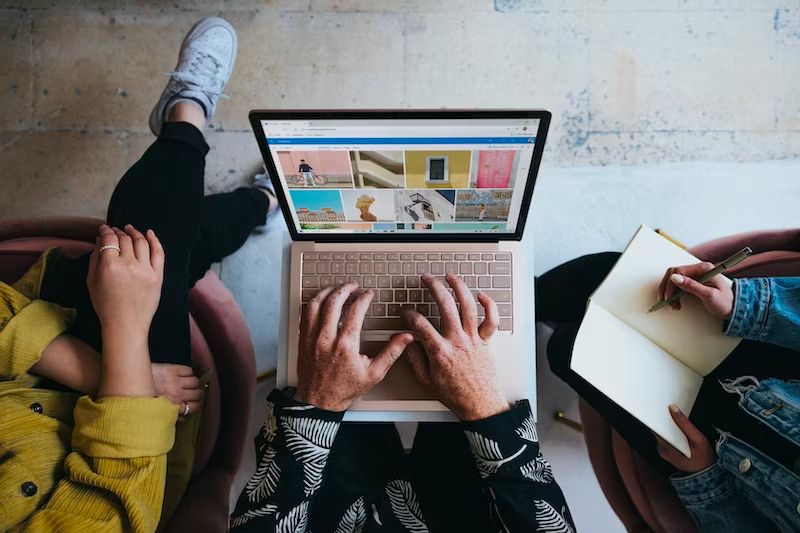How to Hire the Best Video Game Developers With AI
by Waseem Ahmad on Jul 24th, 2023

The video game development industry thrives on innovation, creativity, and technological prowess. To create immersive and captivating gaming experiences, game development companies require a highly skilled and diverse workforce. However, finding the right talent in this competitive landscape can be a daunting task for recruiters. Enter Artificial Intelligence (AI), the revolutionary technology that has the potential to transform the traditional hiring process. The possibilities with AI are truly limitless, and this article will explore precisely how video game development companies (and video game developers) can leverage AI in various aspects, such as portfolio and resume analysis, behavioral interviews, onboarding support, virtual reality assessments, and more, to make data-driven decisions, streamline recruitment, and attract top-notch talent to propel their success in the ever-evolving gaming world.

Portfolio and Resume Analysis
Traditionally, recruiters faced the daunting task of manually sifting through candidates' portfolios and resumes to assess their skills and capabilities. This process was, needless to say, time-consuming and prone to subjective judgments. However, AI has revolutionized portfolio and resume analysis by employing sophisticated algorithms that can rapidly evaluate diverse work samples, such as game design documents, code samples, art assets, and game prototypes. For instance, AI-powered platforms like OpenAI's Codex have been making waves by examining and understanding code repositories, which significantly streamlines the evaluation of candidates' programming skills. By analyzing a candidate's GitHub or GitLab projects, Codex can identify patterns in coding style, understand how candidates tackle complex problems, and provide valuable insights into their programming expertise.
Moreover, AI systems can analyze various art styles and techniques in a candidate's portfolio to gauge their adaptability and creativity across different genres of games. For example, AI-powered tools can identify similarities and differences in art assets from a candidate's previous projects, giving recruiters a comprehensive understanding of their artistic versatility. Strengthening this process with AI saves time and ensures a more thorough assessment of each candidate's potential.
While we’re on the topic of portfolio and resume analysis, are you interested in optimizing your resume job descriptions to increase your chances of landing an interview? Using this simple but powerful prompt on LowTech AI, you can improve the job descriptions on your resume to make them more eye-catching and fit reading algorithms, boosting your chances of selection. Let's use an example to understand how this could work. Imagine you're a software engineer or video game developer looking for a job at a major tech or gaming company and have some prior experience working at another company. Your current description of your previous job or work you completed may look something like this:
Job Experience: Video Game Developer / Software Engineer
Game Developer Studio XYZ | Chicago, IL | June 2022 - December 2022
- Developed and deployed an action-adventure game for PC and consoles
- Led the implementation of dynamic gameplay mechanics, resulting in a minor increase in user retention and got positive player feedback.
- Optimized graphics, reducing rendering overhead by a little and made smooth performance on various devices.
- Designed and integrated lifelike AI for NPCs
While this job description is okay, it may not cut it for the large tech and gaming companies looking to hire the best. Luckily, with the help of AI, this description could be optimized to catch the attention of recruiters. For example, by pasting this job description into this prompt, we get the following output (changes are bolded):
Job Experience: Video Game Developer / Software Engineer
Game Developer Studio XYZ | Chicago, IL | June 2022 - December 2022
- Developed and deployed a highly successful action-adventure game for PC and consoles, showcasing technical expertise and innovation.
- Led the successful implementation of dynamic gameplay mechanics, resulting in a significant 10% increase in user retention and garnering positive player feedback.
- Achieved optimization of graphics, effectively reducing rendering overhead by an impressive 15% to ensure smooth performance on various devices.
- Demonstrated strong skills in AI design and integration by creating lifelike NPCs for an immersive gameplay experience
In just a few seconds, this AI tool was able to add elements to this job description to make it stronger and more appealing, increasing the chances of this imaginary video game developer being hired. While this example was a bit basic, it provides a glimpse of how the power of AI can be harnessed to assist video game companies in hiring talented developers and how developers themselves can use AI tools to get hired and land their dream jobs.

Behavioral Interviews
Once companies (and aspiring candidates) have passed the portfolio and resume analysis phase, interviews are generally next on the line. For many years, interviews have been a staple in assessing a candidate's soft skills, communication abilities, and cultural fit within an organization. However, conducting behavioral interviews relies heavily on human judgment, making it challenging to accurately gauge candidates' emotional intelligence.
Luckily, AI has transformed this process by employing various technologies, including sentiment analysis, natural language processing (NLP), and computer vision, to provide real-time insights during interviews. For instance, AI-driven interview platforms like HireVue used facial recognition and tone analysis at one point to assess a candidate's enthusiasm, confidence, and adaptability throughout the interview. While these features were discontinued, they could be reintroduced (with the proper ethical guidelines) in the future, as society continues to become more technology and AI-powered.
Ultimately, AI tools provide a more comprehensive assessment of candidates' communication styles and problem-solving approaches by analyzing speech patterns, facial expressions, and body language. In addition, recruiters can better understand a candidate's emotional intelligence, adaptability, and collaboration skills, enabling them to make more informed decisions about cultural fit and potential team dynamics. This integration of AI in the interview process enhances the overall quality of candidate evaluation and ensures a more seamless fit within the organization.

Virtual Reality Assessments
The video game development industry places a premium on immersive experiences, making Virtual Reality (VR) assessments a natural fit for evaluating candidates' skills. AI-powered VR simulations create lifelike environments where candidates can showcase their abilities through hands-on challenges. For example, a game development candidate may be tasked with creating a compelling game level in a specific genre or implementing interactive gameplay mechanics within a VR environment. This AI-driven VR assessment allows recruiters to observe candidates' technical expertise and provides a glimpse into their creativity, problem-solving, and adaptability to a cutting-edge medium.
In essence, recruiters can gain a more comprehensive understanding of their abilities by immersing candidates in the development process through AI-powered VR assessments. These assessments offer a tangible sense of how candidates handle challenges, work collaboratively, and thrive in realistic gaming environments, aligning their skills more accurately with the job requirements.

Onboarding Support
After the interview stage, companies tend to make final decisions and send out offers alongside onboarding instructors. This onboarding process is pivotal in setting new hires up for success and integration into the organization's culture. However, without proper support and guidance during this critical phase, new team members can often struggle to adapt to their roles and responsibilities.
That’s where AI comes into play, as AI-driven chatbots and virtual assistants have proven to be invaluable assets during onboarding. For instance, these AI tools can engage with new hires from day one, providing them a personalized onboarding experience. The virtual assistant can answer common questions, provide access to relevant resources, and even conduct personalized orientation sessions based on the new hire's role and department. Furthermore, AI-driven onboard assistants can offer 24/7 support, ensuring new team members feel supported and connected at all times.
In addition, virtual assistants can also bridge the new hire and the HR department or team, facilitating smooth communication and enhancing the onboarding experience. For example, a virtual onboarding assistant can guide a new game developer through the company's game engine setup, providing links to relevant tutorials and resources. The assistant can also introduce the new developer to key team members and initiate conversations about ongoing projects, ensuring seamless integration into the development team. Essentially, by expanding the scope of AI-driven onboarding support, companies can create a more inclusive and supportive environment for new hires, boosting their productivity and overall job satisfaction.

Collaborative Filtering
Last but most certainly not least, the goal of every company is to create a collaborative and efficient workplace. AI has introduced a new dimension to collaborative filtering, enabling recruiters to identify potential candidates based on past successful hires and employee performance data. By mining patterns and preferences from historical data, AI-generated recommendations help recruiters pinpoint candidates who align with the company's culture and are more likely to succeed. For example, AI can analyze historical employee data, such as performance metrics, tenure, and project involvement, to identify patterns associated with successful hires. AI can generate a shortlist of candidates who exhibit similar traits by analyzing the characteristics and attributes of current top-performing employees. Furthermore, AI-driven collaborative filtering can facilitate employee referral programs. By analyzing the connections and relationships of current employees, AI can recommend potential candidates from their networks who align with the company's culture and values.
By employing AI-driven collaborative filtering, recruiters can focus their efforts on candidates more likely to thrive in the organization. This data-driven approach enhances the efficiency of the hiring process and ensures that the company attracts individuals who can make significant contributions to its success. Expanding the data sources and incorporating more data points in the collaborative filtering process can refine the recommendations further, ensuring a more tailored and accurate selection of candidates.

Conclusion
The strategic incorporation of AI in the hiring process for video game development holds immense potential for revolutionizing talent acquisition in this competitive industry. By optimizing portfolio and resume analysis, behavioral interviews, onboarding support, virtual reality assessments, and other critical aspects, AI empowers recruiters to make more data-driven decisions, fostering diversity and creating dynamic teams capable of driving innovation. As AI technology advances, its relationship with video game development promises to unlock new levels of creativity, pushing the boundaries of gaming experiences in the future and ensuring that companies can identify and retain the most talented and innovative individuals, positioning them for sustained success. If you're interested in learning more about how AI tools can be used in video game development, consider checking out some of my other articles and using some of my simple but powerful AI tools!